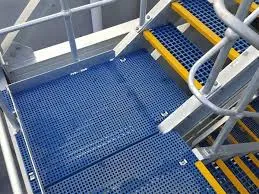
-
 Afrikaans
Afrikaans -
 Albanian
Albanian -
 Amharic
Amharic -
 Arabic
Arabic -
 Armenian
Armenian -
 Azerbaijani
Azerbaijani -
 Basque
Basque -
 Belarusian
Belarusian -
 Bengali
Bengali -
 Bosnian
Bosnian -
 Bulgarian
Bulgarian -
 Catalan
Catalan -
 Cebuano
Cebuano -
 China
China -
 China (Taiwan)
China (Taiwan) -
 Corsican
Corsican -
 Croatian
Croatian -
 Czech
Czech -
 Danish
Danish -
 Dutch
Dutch -
 English
English -
 Esperanto
Esperanto -
 Estonian
Estonian -
 Finnish
Finnish -
 French
French -
 Frisian
Frisian -
 Galician
Galician -
 Georgian
Georgian -
 German
German -
 Greek
Greek -
 Gujarati
Gujarati -
 Haitian Creole
Haitian Creole -
 hausa
hausa -
 hawaiian
hawaiian -
 Hebrew
Hebrew -
 Hindi
Hindi -
 Miao
Miao -
 Hungarian
Hungarian -
 Icelandic
Icelandic -
 igbo
igbo -
 Indonesian
Indonesian -
 irish
irish -
 Italian
Italian -
 Japanese
Japanese -
 Javanese
Javanese -
 Kannada
Kannada -
 kazakh
kazakh -
 Khmer
Khmer -
 Rwandese
Rwandese -
 Korean
Korean -
 Kurdish
Kurdish -
 Kyrgyz
Kyrgyz -
 Lao
Lao -
 Latin
Latin -
 Latvian
Latvian -
 Lithuanian
Lithuanian -
 Luxembourgish
Luxembourgish -
 Macedonian
Macedonian -
 Malgashi
Malgashi -
 Malay
Malay -
 Malayalam
Malayalam -
 Maltese
Maltese -
 Maori
Maori -
 Marathi
Marathi -
 Mongolian
Mongolian -
 Myanmar
Myanmar -
 Nepali
Nepali -
 Norwegian
Norwegian -
 Norwegian
Norwegian -
 Occitan
Occitan -
 Pashto
Pashto -
 Persian
Persian -
 Polish
Polish -
 Portuguese
Portuguese -
 Punjabi
Punjabi -
 Romanian
Romanian -
 Russian
Russian -
 Samoan
Samoan -
 Scottish Gaelic
Scottish Gaelic -
 Serbian
Serbian -
 Sesotho
Sesotho -
 Shona
Shona -
 Sindhi
Sindhi -
 Sinhala
Sinhala -
 Slovak
Slovak -
 Slovenian
Slovenian -
 Somali
Somali -
 Spanish
Spanish -
 Sundanese
Sundanese -
 Swahili
Swahili -
 Swedish
Swedish -
 Tagalog
Tagalog -
 Tajik
Tajik -
 Tamil
Tamil -
 Tatar
Tatar -
 Telugu
Telugu -
 Thai
Thai -
 Turkish
Turkish -
 Turkmen
Turkmen -
 Ukrainian
Ukrainian -
 Urdu
Urdu -
 Uighur
Uighur -
 Uzbek
Uzbek -
 Vietnamese
Vietnamese -
 Welsh
Welsh -
 Bantu
Bantu -
 Yiddish
Yiddish -
 Yoruba
Yoruba -
 Zulu
Zulu
insulated frp covers
The Benefits of Insulated FRP Covers A Comprehensive Overview
In today's industrial landscape, optimizing efficiency and ensuring safety are paramount considerations. Among the various materials and technologies available to achieve these goals, insulated fiber-reinforced plastic (FRP) covers have emerged as a vital component in many applications. This article explores the benefits of insulated FRP covers, their applications, and why they are becoming increasingly popular in various industries.
Understanding Insulated FRP Covers
Insulated FRP covers are the combination of fiber-reinforced plastic and insulation materials. This blend creates a product that is not only lightweight and durable but also effective in temperature regulation. FRP itself is a composite material made from a polymer matrix reinforced with fibers, typically glass or carbon. The insulation layer can vary, including materials such as polyurethane or polystyrene, which enhance thermal resistance. The result is a cover that can be applied across various industrial applications to provide insulation against external temperature influences.
Key Advantages
1. Thermal Insulation One of the most significant benefits of insulated FRP covers is their exceptional thermal insulation properties. They effectively minimize heat loss or gain, protecting sensitive processes and materials from extreme temperature variations. This is particularly crucial in industries like food processing, chemical production, and pharmaceuticals, where temperature control is vital for product integrity.
2. Corrosion Resistance Traditional materials often suffer from corrosion, especially in harsh environments. FRP is inherently resistant to chemical attack, making insulated FRP covers ideal for industries that involve exposure to corrosive substances. Their lifespan is typically longer than metal alternatives, reducing maintenance costs and the need for frequent replacements.
3. Lightweight Characteristics Compared to metals, FRP covers are considerably lighter, which simplifies installation and reduces transportation costs. This lightweight nature does not compromise strength or durability, allowing for easy handling during installation or removal.
4. Customizability Insulated FRP covers can be easily molded into various shapes and sizes to meet specific industry requirements. Whether covering tanks, pipes, or other equipment, their customizable features ensure that they fit perfectly and provide maximum insulation efficiency.
insulated frp covers

5. Energy Efficiency By minimizing thermal losses or gains, insulated FRP covers contribute to enhanced energy efficiency. Industries that leverage these covers report decreased energy costs associated with heating or cooling processes, leading to an overall reduction in operational expenses.
6. Eco-Friendly Options Recent advancements have also led to the development of eco-friendly FRP materials. Many manufacturers now produce FRP from recycled materials or more sustainable sources. This aspect appeals to businesses prioritizing sustainability and reducing their environmental footprint.
Applications of Insulated FRP Covers
Insulated FRP covers find applications across various sectors, including
- Food and Beverage Ensuring that products are stored and processed at optimal temperatures. - Chemical Processing Protecting sensitive chemicals from extreme temperature swings that could affect their efficacy or stability. - Pharmaceuticals Maintaining stringent temperature controls for drug production and storage. - Energy Production Used in power plants to insulate pipes and reduce heat loss.
Conclusion
Insulated FRP covers offer a multitude of benefits that make them an attractive choice for various industries. Their unique combination of thermal insulation, corrosion resistance, lightweight nature, and energy efficiency meets the high demands of modern industrial applications. As industries continue to seek innovative solutions for efficiency and sustainability, the popularity of insulated FRP covers is poised to grow further.
In conclusion, whether you're looking to enhance temperature control in your facility, reduce maintenance costs associated with corrosion, or simply improve energy efficiency, insulated FRP covers present an effective solution. With ongoing advancements in materials science, the future looks promising for FRP technology and its role in various industrial applications.









